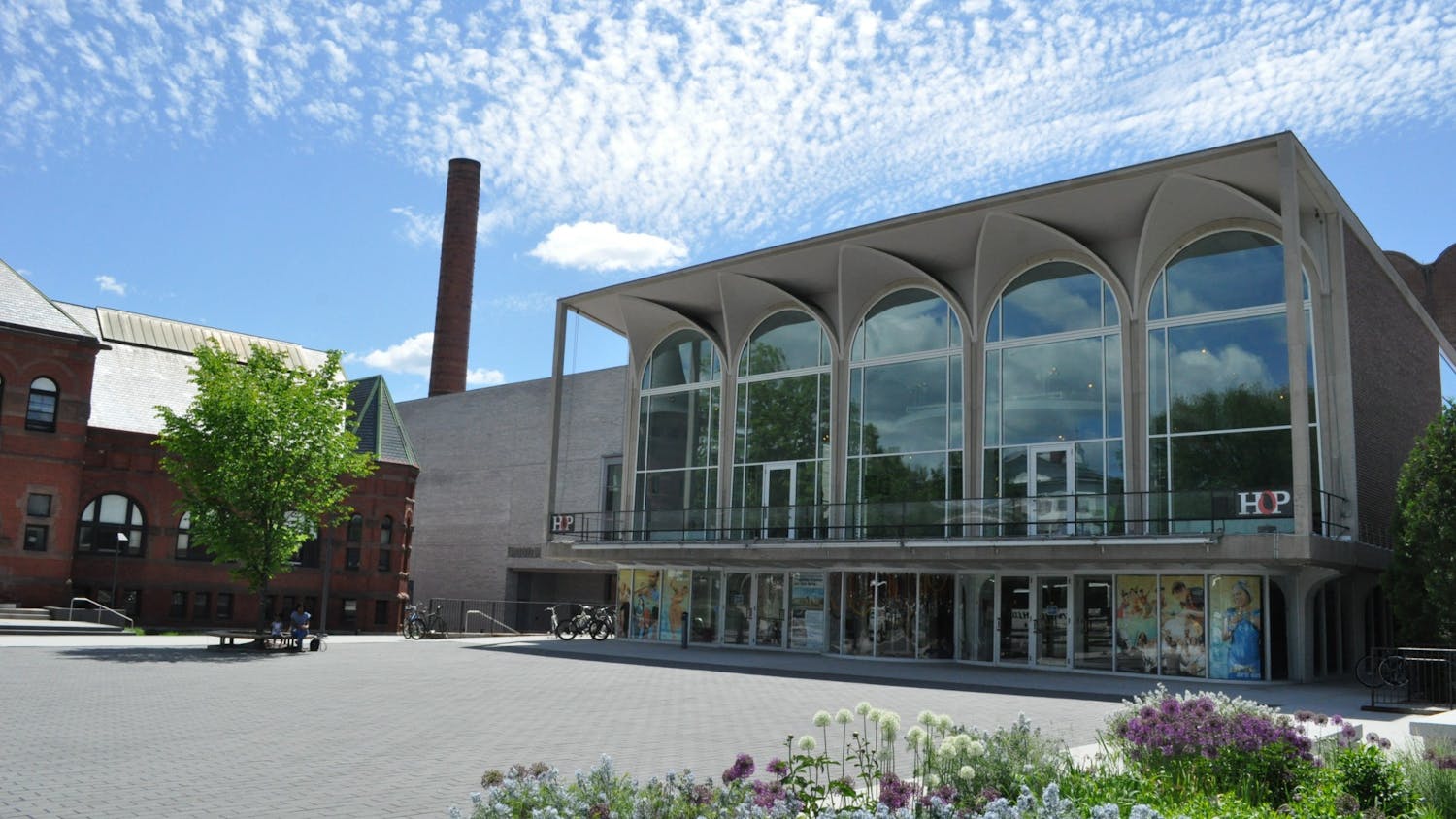Today, Gauri's vision is still in practice, and her ashram's villagers tour the world as the Nrityagram Dance Ensemble. The ensemble is still dedicated solely to the art of classical Indian dance, with the performers living together in the same self-sufficient community in eastern India that Gauri founded. Nrityagram will perform at the Hopkins Center for the Arts on Tuesday at 7 p.m.
The company's style, Odissi, is the oldest of the eight forms of classical Indian dance. Odissi originated on the eastern coast of India in the first century B.C. Odissi dances were first performed in temples and royal courts as a form of worship and storytelling.
As it is performed in modern times, Odissi dance includes abstract pieces similar to modern dance in the West, as well as movements that tell traditional myths.
The dances are accompanied by brightly colored costumes, elegant hand gestures and dramatic facial expressions.
The work Nrityagram will perform on Tuesday, "Pratima: Reflection," premiered in February 2008 at the Joyce Theater in New York City and features traditional Indian myths like the hymn of creation, "Praarambha." Other pieces, especially the company's original choreography, will resemble the Western style of free-form lyrical dance.
In founding her ashram, Gauri converted 10 acres of farmland located south of Bangalore, India, into a self-sufficient village. Under Gauri, the dancers of the village formed an ensemble and recruited students to instruct in Odissi, passing on their art.
After Gauri died in 1998, her students continued the dance company and village. Surupa Sen, the first student at Nrityagram, became the artistic director. Applicants audition to join the basic training program, and students must have completed high school and have some form of dance training, which can range from ballet to yoga.
"If they are accepted, they live with us for three months and then if they decide they want to live this kind of life, we recruit them for a basic period of three years," Sen said in an interview with The Dartmouth. "They can then train for an advanced period for another three years."
The six students who are accepted each year are provided free room, board and tuition. Along with the intensive dance training, students also learn about Indian literature, Sanskrit, religion and philosophy. The company regularly brings in experts to give workshops in martial arts, yoga, mime and sculpture.
Students are required to give back to the ashram by cleaning, growing food or working in the dance company's office.
"We build a relationship with the environment," Sen said. "We believe that the energy that comes from the dance must be returned to the earth."
Nrityagram welcomes visitors every day and holds a festival, Vasantahabba, every spring. The all-night performance, considered the "classical Woodstock of India," attracts more than 40,000 spectators and features many great Indian musicians and artists as well as the dance ensemble.
"I think as dancers, we are involved in the preservation and popularization of Indian dance," Sen said. "Our mission is to connect and communicate my art globally, and be able to find a universal language where, through my art, I can communicate deep emotions."




